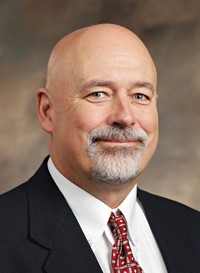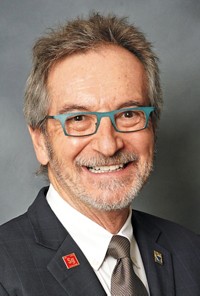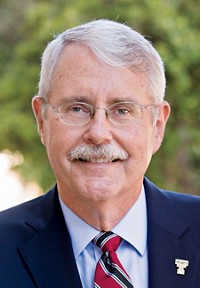Advertisement
Grab your lab coat. Let's get started
Welcome!
Welcome!
Create an account below to get 6 C&EN articles per month, receive newsletters and more - all free.
It seems this is your first time logging in online. Please enter the following information to continue.
As an ACS member you automatically get access to this site. All we need is few more details to create your reading experience.
Not you? Sign in with a different account.
Not you? Sign in with a different account.
ERROR 1
ERROR 1
ERROR 2
ERROR 2
ERROR 2
ERROR 2
ERROR 2
Password and Confirm password must match.
If you have an ACS member number, please enter it here so we can link this account to your membership. (optional)
ERROR 2
ACS values your privacy. By submitting your information, you are gaining access to C&EN and subscribing to our weekly newsletter. We use the information you provide to make your reading experience better, and we will never sell your data to third party members.
Policy
For President-Elect: Charles E. Kolb Jr.
September 16, 2013
| A version of this story appeared in
Volume 91, Issue 37
Northeastern Section. Aerodyne Research Inc., Billerica, Mass.
Academic record: Massachusetts Institute of Technology, S.B., 1967; Princeton University, M.S., 1968, Ph.D., 1971
Honors: ACS Fellow, 2009; Henry A. Hill Memorial Award, ACS Northeastern Section, 2005; ACS Creative Advances in Environmental Science & Technology Award, 1997; National Academy of Engineering, 2013; National Academies, national associate, 2003; American Association for the Advancement of Science Fellow, 2001; American Geophysical Union Fellow, 2000; American Physical Society Fellow, 1997; Optical Society of America Fellow, 1988; University of Wisconsin, Madison, McElvain Lecturer, 2011; Massachusetts Institute of Technology, Hottel Lecturer, 2003; Texas A&M University, Harris Lecturer, 2001; Arizona State University, Conceptual Foundations of Chemistry Lecturer, 1998
Professional positions (for past 10 years): Aerodyne Research Inc., president and CEO, 1985–
Service in ACS national offices: Committee on Environmental Improvement, 2003–12, chair, 2006–08, vice chair, 2005, committee associate, 2001–02; Presidential Task Force on Enhancing Innovation & Competitiveness, 2007–08; Editorial Advisory Board, Environmental Science & Technology, 2011– ; ACS national award committees; Journal Editor Selection Committee
Service in ACS offices:Northeastern Section: trustee, 1994–96, chair, 1991, chair-elect, 1990; Richards Medal Committee, 1998–2006, chair 2005–06; Esselen Award Committee, 2007–11, chair, 2009–10
Member: Member of ACS since 1969. American Association for the Advancement of Science; American Physical Society; Optical Society of America; American Geophysical Union; Combustion Institute; Union of Concerned Scientists. ACS Divisions: Environmental Chemistry, Physical Chemistry
Related activities: More than 20 National Research Council/National Academy of Sciences boards and committees, including the following: Committee on Atmospheric Chemistry, member, 1987–90, chair, 1990–93; Committee on Tropospheric Ozone Formation & Measurement, 1989–91; Committee on Review & Evaluation of the Army Chemical Stockpile Disposal Program, member, 1993–2000, vice chair, 1998–2000; Committee on Research Opportunities & Priorities for the EPA, 1995–97; Board on Atmospheric Sciences & Climate, 1990–93, 1997–2000; Committee on Review & Evaluation of Chemical Events at Army Chemical Disposal Facilities, chair, 2001–02; Committee on Chemical Demilitarization, 2003–10; Committee on Monitoring at Chemical Agent Disposal Facilities, chair, 2004–05; Committee on the Significance of International Transport of Air Pollutants, chair, 2008–09; Board on Chemical Science & Technology, 2008– ; Committee on Assessment of Agent Monitoring Strategies for the Blue Grass & Pueblo Chemical Agent Destruction Pilot Plants, chair, 2011–12; Committee on Determining Core Capabilities in Chemical & Biological Defense Research & Development, 2012–13; NASA Panel for Chemical Kinetics & Photochemical Data Evaluation, 1991– ; NASA Atmospheric Effects of Aviation Program Steering Committee, 1998–2000; NSF Advisory Committee for Geosciences, 1998–2000; MIT Regional Laser Center, advisory board, 1981–92; University of Massachusetts, Boston, scientific advisory board, 1992–94; Radcliffe Institute for Advanced Study, Harvard University, science advisory committee, 2003–05; Department of Civil & Environmental Engineering, Princeton University, advisory council, 2000– , chair, 2008– ; Idaho National Engineering & Environmental Laboratory, Board of Visitors, 1998–2000, Environmental & Energy Sciences Review Committee, 2001–04; Malta Conferences Foundation, Board of Directors, 2011– ; Gordon Research Conference on Atmospheric Chemistry, cochair, 1991; International Journal of Chemical Kinetics, editorial advisory board, 1990–92; Geophysical Research Letters, atmospheric sciences editor, 1996–99; published more than 200 archival journal articles and book chapters; three patents on applications of laser spectroscopy and mass spectrometry for atmospheric monitoring
Kolb’S STATEMENT
It’s a great honor to ask for your support as a candidate for the presidency of the American Chemical Society. Today’s ACS is a vibrant and vital organization, successfully serving many of our members’ professional needs. It is also a very important source of scientific information and insight for both our profession and, properly presented, our planet’s policymakers.
However, we live in a very challenging and rapidly changing world. Venerable institutions can become outmoded and increasingly irrelevant surprisingly quickly. Just think about Bell Labs, Digital Equipment Corp., Eastman Kodak, or America Online.
It is vitally important that we ensure ACS’s future relevance and effectiveness. We need an ACS that will serve our current members as they deal with today’s scientific and economic challenges. But we also need an ACS that will be prepared to meet the needs of our youngest members over their (~50 year) professional lives. It must also continue providing a large fraction of the ever-expanding scientific information needed by an increasingly complex world. This can only be achieved by leaders who can envision what a successful ACS will look like 50 years from now and can chart the course and start the journey to achieve that vision.
My Experience.
Shortly after I became president of the company I lead, it became clear that our “research for hire” business model was not sustainable, despite a very talented and productive staff of scientists and engineers. I devised a new strategy focusing our research on a few critical global issues, including environmental sustainability, energy technology, and military remote sensing, and our development efforts on key technologies required to address them.
A quarter of a century later, we’re still executing a continuous improvement version of that plan. Our company is thriving, with our research capabilities and our advanced instrument technologies in high demand. By aligning our scientific capabilities with important problems whose solutions require fundamental insights, we have been able to expand both our skills and our revenues.
My Vision for ACS.
In my opinion, there are at least three long-term goals we need to meet to help ensure ACS’s continued and expanded success:
First, we need a robust, innovative, and sustainable industrial base.
ACS must work much harder to host the dialogues and help develop the strategies required for faster evolution of an agile and sustainable chemistry-enabled industrial sector, where ACS members can innovate, produce, and thrive. Newly expanded and less expensive feedstocks and energy sources have revitalized much of the U.S.’s chemical industry, but its long-term vitality will require ever more innovative and sustainable processes and products. Other sectors of the chemical enterprise, like the pharmaceutical industry, need to evolve rapidly to sustain or regain their vitality.
I believe that ACS can and must serve as a catalyst to bring industrial leaders together to determine how to overcome both the technical and nontechnical barriers blocking more efficient, cost-effective, and environmentally acceptable processes and products.
Second, our members and students need expanded understanding of chemistry’s role in the world.
ACS needs to continue helping educators at all levels to effectively present the beauty of fundamental chemistry. But we also need to help them convey the critical role chemistry can and must play to sustain and enhance our economy, security, health, and environment. ACS’s education-oriented staff and committees have started addressing this challenge; their efforts need to be supported and expanded so the large fraction of ACS members who teach can be engaged and empowered.
Third, we need members prepared to seize the future.
Nearly all of the critical challenges facing our world have significant chemical components. ACS must help our current and future members better understand how their vision and their skills can contribute to a more prosperous and sustainable future. The fact that too many ACS members are unemployed or underemployed, while most global challenges need chemical insight and innovation to be addressed successfully, is a travesty. ACS needs to develop more effective ways to help current and future members orient their interests and capabilities to successfully address critical problems. ACS also needs to motivate both private and public investments to ensure resources exist to fund the science needed for progress.
Let’s work together to chart the path and start the journey that can help ensure the long-term vitality and relevance of ACS by pursuing these three goals.
MORE ON THIS STORY
- Candidates' Election Statements And Backgrounds
- For President-Elect: G. Bryan Balazs
- For President-Elect: Charles E. Kolb Jr.
- For President-Elect: Diane Grob Schmidt
- For District II Director: George M. Bodner
- For District II Director: Alan A. Hazari
- For District IV Director: Rigoberto Hernandez
- For District IV Director: Larry K. Krannich
- For Director-At-Large: Susan B. Butts
- For Director-At-Large: Thom H. Dunning Jr.
- For Director-At-Large: Dorothy J. Phillips
- For Director-At-Large: Kathleen M. Schulz
- To download a pdf of this article, visit http://cenm.ag/acselection.






Join the conversation
Contact the reporter
Submit a Letter to the Editor for publication
Engage with us on Twitter